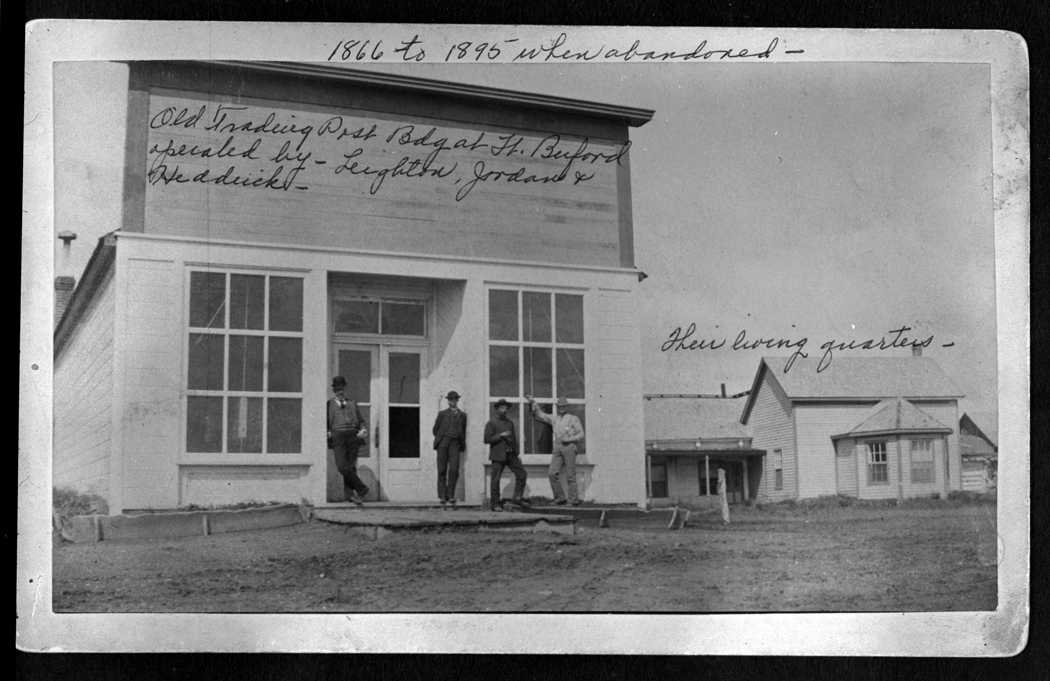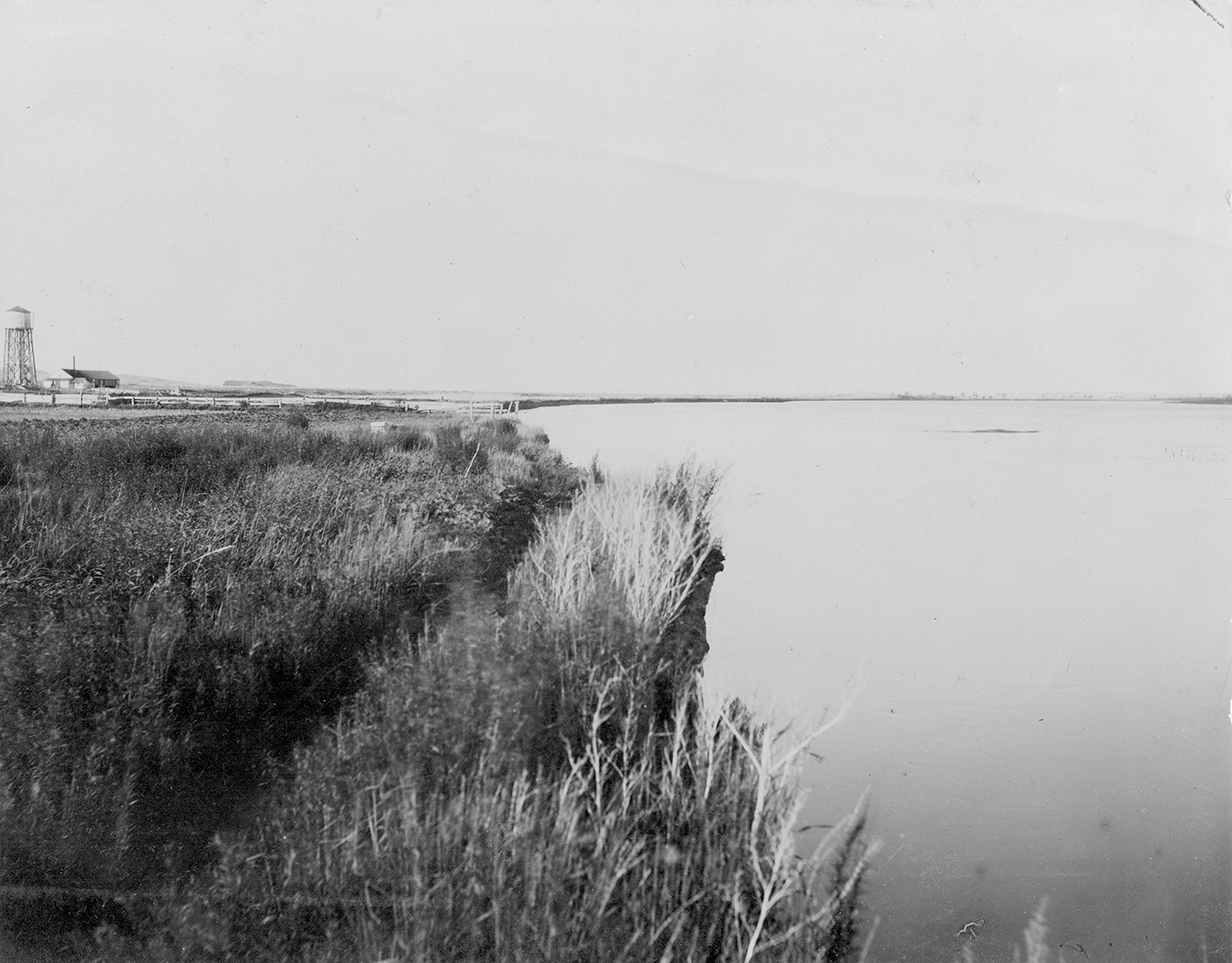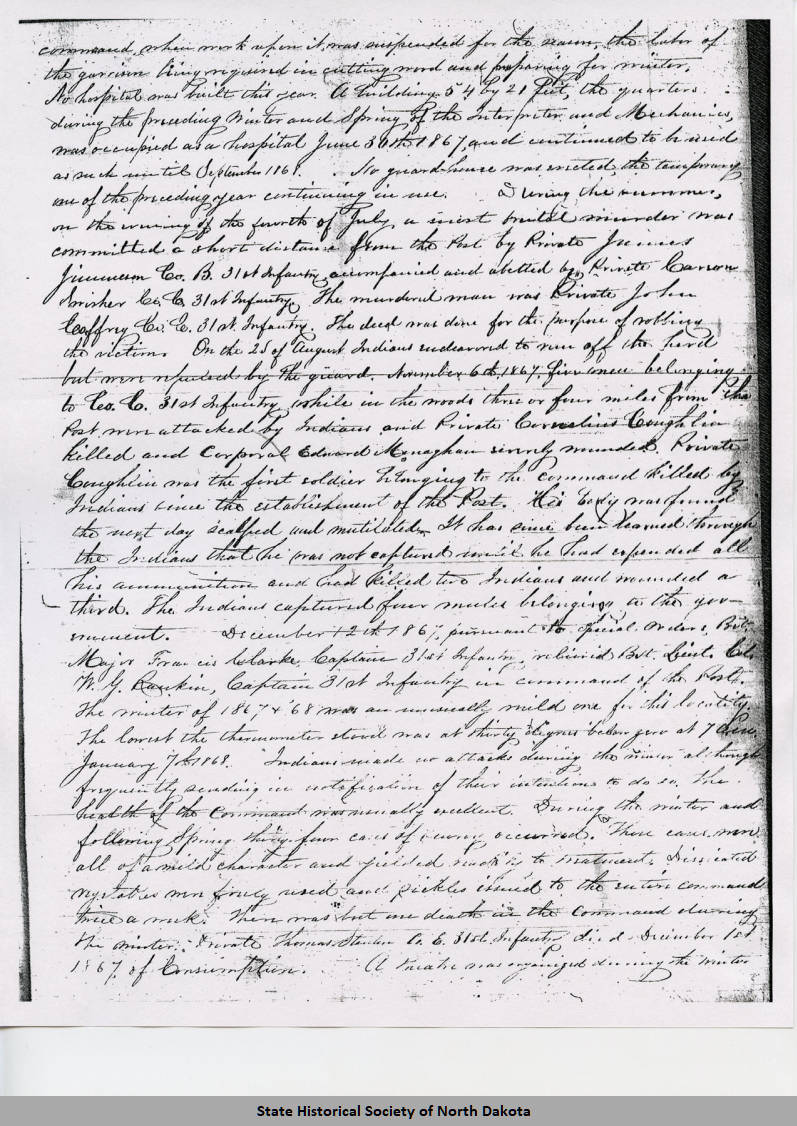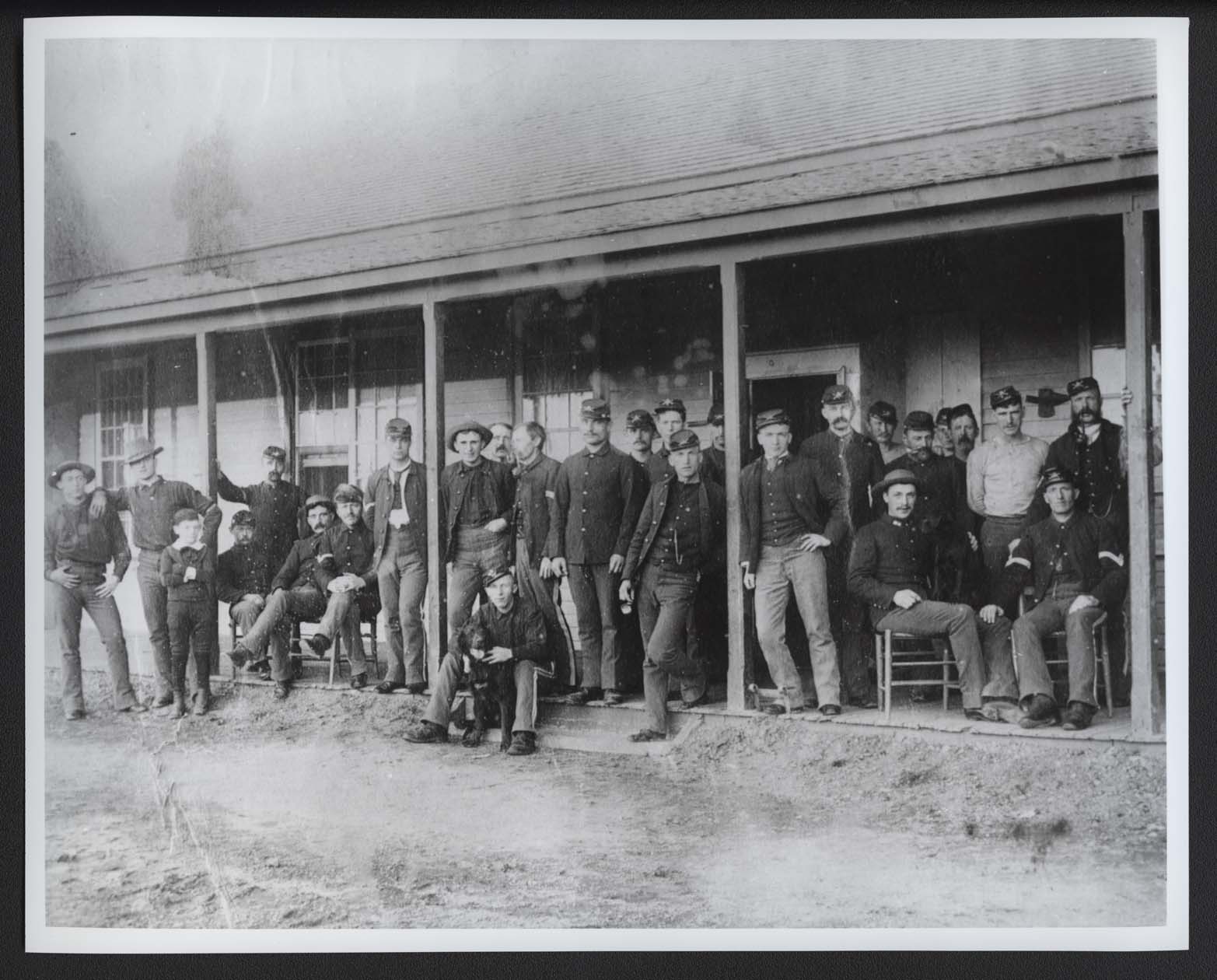Buford Records
Leighton and Jordan held the contract for post trader at Fort Buford in 1875. The traders’ books reveal the purchases of soldiers, officers, and nearby residents. On January 25, 1875, Captain Powell (entry 254) purchased one ounce of celery seed, one ounce of allspice, and one ounce of cinnamon in addition to some other items. These spices would have been used by Powell’s cook to enhance the flavor of the family’s meals. The purchase of spices suggests a well-stocked pantry for the officer’s family.
On February 3, 1875, Colonel Moore (entry 264) purchased fifteen pounds of potatoes at a cost of $15. The price of these potatoes would have been beyond the ability of an enlisted soldier who made about $13 a month. In addition, an enlisted man would not have space to store potatoes. Officers had a kitchen and usually, after 1870, a pantry or cellar for storing canned goods and root vegetables such as potatoes and onions during the winter.
The post surgeon also kept records at Fort Buford. In 1868, during the period when scurvy presented a significant risk to the health of the soldiers, post surgeon James P. Kimball wrote of the soldiers’ general condition:
“...The health of the command was usually excellent. During the winter and following spring thirty-four cases of scurvy occurred. These cases were all of a mild character and yielded readily to treatments. Dessicated vegetables were freely used and pickles issued to the entire command twice a week. There was but one death in the command during the winter. Private Thomas Standen (?) Co E 31st Infantry died December 1st 1867 of Consumption.”
Assistant Post Surgeon Kimball recorded the progress of the Post garden in his logbook of 1868:
“July 3d. The post garden embracing five acres of ground is looking finely. The wet season has thus far been very propitious and the vegetables are growing rapidly. The garden now affords lettuce and radishes for the entire command in abundance. Lambs Quarter or Mountain Spinach (Chenopodium album) which is indigenous and plentiful is much used by the command for greens. This affords a fair supply of vegetable food. The health of the command is excellent. There are at present no cases of disease at the Post that can be traced to dietetic causes....”
“July 22nd. Grasshopper in immense numbers made their appearance to-day. The potato bug has commenced its depredations. An insect also has attacked the cabbages, turnips and beets. Every exertion will be made to keep these off, since the command depends entirely upon the garden for fresh vegetables and upon its success or failure depends materially the health and comfort of the troops. Green peas are now in season and in sufficient quantity for the supply of the garrison. Also cucumber and onions. Cucumbers thus far appear to succeed better than any other vegetables, the yield being plentiful and of excellent quality [p. 81].”
“July 26th. The grasshoppers have nearly all disappeared since the storm and wind of yesterday. They have done serious damage to the beans, peas and spinach in the post gardens. [p. 83].”
“August 31st... The Post garden has afforded an abundant supply of vegetables for the command during the month. Nearly everything plated has produced well except the potatoes which have failed entirely…. [p. 88].”
The following spring, Assistant Post Surgeon Kimball wrote with confidence about the early status of the Post garden. The use of glass covers to protect early plantings from frost suggests deep devotion and advanced skill in gardening:
“May 31st [1869].... There have been occasional rains during the month that have been of great service to the Post garden which now presents a very promising appearance. The vegetables, the seeds of which were planted about the first of this month have usually a more vigorous and thriving appearance than those planted earlier in the season, excepting of course those plants started under glass covers, to be transplanted. Great credit is due in this department to the skill and assiduity of Mr. Frederick Brandt, Quarter Master Clerk at the Post. [p. 123].”
| Source N | 
Leighton and Jordan’s trading post at Fort Buford. Traders set up businesses near army posts where soldiers could buy food, stamps, whiskey, cloth, lamps and other supplies. SHSND 0030-I-07. |
| Source O | 
This view of Fort Buford from the river shows the area where the gardens were located. The low banks next to the river provided fertile soil and easy access to water. SHSND C0765. |
| Source P | 
Post Returns, Fort Buford. Records of Adjutant General’s Office. Medical History of Fort Buford, 1868–1895 Vol 198, 199, 201. http://www.digitalhorizonsonline.org/digital/collection/uw-ndshs/id/5130 |
Private Wilmot Sanford
Private Wilmot Sanford of New Hampshire enlisted in the Army in 1872 at the age of twenty-three. He served in Company D of the 6th Regiment, Infantry, serving at least three years of his five-year enlistment at Fort Buford at the confluence of the Yellowstone and Missouri Rivers. By the time of Sanford’s service, the Army was providing more nutritious food for soldiers. His notes about meals indicate that vegetables (usually potatoes and onions) and fruits (plum duff and apples) were regularly served at post meals. At least one winter meal included tomatoes, but that is the only time that tomatoes—a vegetable very high in Vitamin—showed up on Sanford’s food list that winter.
Several pages of the diary are transcribed here to show the relative importance of the dietary entries. He mentioned food in detail several times a week. Other entries or portions of entries indicate some variety of food and the importance of the steamboats in supplying the remote post with vegetables. Among the foods mentioned are kraut, cabbage, mush, syrup, apples and applesauce, plums, pork, beef, potatoes, onions, beans, rice, and molasses. Corn, peaches (canned) and tomatoes were mentioned only once, but corn meal in the form of mush or fritters (fried corn meal mush) appeared frequently. Occasionally, the men supplemented their diets with wild meats including antelope, venison, and prairie chickens.
The arrival of the first steamboat in the spring was an important event. The boats brought all kinds of supplies, but most importantly potatoes and other vegetables for both officers and for enlisted men. The pay of privates, about $13 a month at that time, prevented Sanford from purchasing many meals or supplementary food from Leighton and Jordan, the post traders. Officers, however, routinely purchased food for their families (which did not draw rations) from the post trader and from the steamboats. In 1875, the first steamboat was the Josephine from Yankton which arrived on May 4th.
Sanford’s diaries have been transcribed and published in North Dakota History Vol 33, No. 4 Fall 1966 (335-378) and North Dakota History volume 52, No. 3 Summer 1985 (2-40).
| Source Q | 
The men of Company K, 15th Infantry relax in front of their barracks at Fort Buford. Soldiers’ health, and their ability to fight if necessary, depended on an adequate diet. SHSND 2002-P-17-01. |
| Source O |
Diary 1874 Friday October 16th. Saturday October 17th. Sunday October 18th. Monday October 19th. Tuesday October 20th. Wednes October 21st. Thirsday October 22nd. Friday October 23rd. Saturday October 24th. Sunday October 25th. Monday October 26th. Tuesday October 27th. Wednes October 28th. Thirsday October 29th. Friday October 30th. Saturday October 31st. Sunday November 1st. Monday November 2nd. Tuesday November 3rd. Wednesday November 4th. Thursday November 5th. Friday November 6th. Saturday November 7th. Sunday November 8th. Monday November 9th. 1875 Thirsday May 13th Wednes May 19th. Thirsday May 20th. 1876 [Sanford was assigned to an expedition leaving Fort Buford for several days (September 1–17, 1876)] Tuesday September 5, 1876. Wednesday September 6, 1876. Thursday September 7, 1876. [on the expedition, the men ate a lot of fresh meat, but ran out of rations on Thursday September 14. On September 15, the expedition encountered the steamboat C. M Chambers which allowed them to draw rations. “Got vegatables.” He wrote.] Tuesday September 19, 1876. |


